Acacia Tree Care: Information About Acacia Tree Types
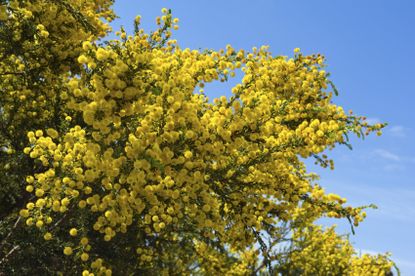

Acacias are graceful trees that grow in warm climates such as Hawaii, Mexico, and the southwestern United States. The foliage is typically bright green or bluish green and the small blooms may be creamy white, pale yellow, or bright yellow. Acacia may be evergreen or deciduous.
Acacia Tree Facts
Most acacia tree types are fast growers, but they usually live only 20 to 30 years. Many varieties are valued for their long roots which help stabilize the soil in areas threatened by erosion. The sturdy roots reach deep for underground water, which explains why the tree tolerates extreme drought conditions. Many types of acacia are protected by long, sharp thorns and an extremely unpleasant flavor that discourages animals from eating the leaves and bark.
Acacia Tree and Ants
Interestingly, stinging ants and acacia trees have a mutually beneficial relationship. Ants create cozy living quarters by hollowing out the thorns, then survive by eating the sweet nectar produced by the tree. In turn, the ants protect the tree by stinging any animals that attempt to munch on the leaves.
Acacia Tree Growing Conditions
Acacia requires full sunlight and grows in nearly any type of soil, including sand, clay, or soil that is highly alkaline or acidic. Although acacia prefers well-drained soil, it tolerates muddy soil for short periods of time.
Acacia Tree Care
Acacia is basically a plant-it-and-forget-it type of tree, although a young tree may need protection from wildlife while it develops its defense system. During the first year, the tree benefits from an orchid fertilizer every three to four weeks. After that time, you can feed the tree a general purpose fertilizer once every year, but it isn't an absolute requirement.
Acacia requires little or no water. Acacia may need occasional pruning during the dry months. Avoid pruning leafy, green areas and trim only dead growth. Although the tree is disease-resistant, it can sometimes be affected by a fungal disease known as anthracnose. Additionally, watch for pests such as aphids, thrips, mites, and scale.
Acacia Tree Types
Acacia trees preferred by most gardeners are varieties that burst out with yellow blooms in the winter or early spring. Popular types include:
Gardening tips, videos, info and more delivered right to your inbox!
Sign up for the Gardening Know How newsletter today and receive a free download of our most popular eBook "How to Grow Delicious Tomatoes."
- Bailey acacia, a hardy Australian variety that reaches heights of 20 to 30 feet (6-9 m.). Bailey acacia displays feathery, bluish gray foliage and bright yellow wintertime blooms.
- Also known as Texas acacia, Guajillo is an extremely heat-tolerant tree that hales from southern Texas and Mexico. It is a shrubby plant that reaches heights of 5 to 12 feet (1-4 m.). This species produces clusters of fragrant white flowers in early spring.
- Knifeleaf acacia is named for its silvery gray, knife-shaped leaves. Mature height for this tree is 10 to 15 feet (3-4 m.). Sweet smelling yellow flowers appear in early spring.
- Koa is a fast-growing acacia native to Hawaii. This tree, which eventually reaches heights and widths of up to 60 feet (18 m.), displays pale yellow blooms in spring.

A Credentialed Garden Writer, Mary H. Dyer was with Gardening Know How in the very beginning, publishing articles as early as 2007.
-
 "My Worst Mistake" – Gardeners Share 10 Hard-Learned Lessons
"My Worst Mistake" – Gardeners Share 10 Hard-Learned LessonsGardeners never stop learning, and sometimes our mistakes are the best teachers. But why not save time and heartache by learning from other gardeners' failures?
By Melanie Griffiths
-
 Crops for Urban Growing: 8 Edible Plants For Urban Gardens
Crops for Urban Growing: 8 Edible Plants For Urban GardensUrban edible gardening lets your yard do double duty of beauty and practicality. Have fun combining edible plants with ornamentals.
By Teo Spengler
-
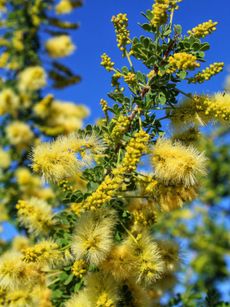 Catclaw Acacia Facts: What Is A Catclaw Acacia Tree
Catclaw Acacia Facts: What Is A Catclaw Acacia TreeLooking for a small tree or large shrub that grows primarily along streambanks and washes, and in chaparral? Learn about catclaw acacia here.
By Mary H. Dyer
-
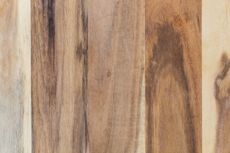 Wood From Acacia Trees: What Is Acacia Wood Used For
Wood From Acacia Trees: What Is Acacia Wood Used ForWood from acacia trees has been used by the Aboriginal people of Australia for centuries and is still in use. What is acacia wood used for? Acacia wood has many uses. The following article contains information on acacia wood uses and more.
By Amy Grant
-
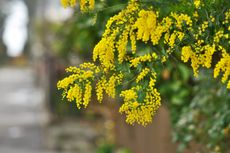 What Is A Bailey Acacia Tree – Tips For Growing A Bailey Acacia Tree
What Is A Bailey Acacia Tree – Tips For Growing A Bailey Acacia TreeThe Bailey acacia tree produces many pods filled with seed. It is a nitrogen fixing member of the pea family and can help improve soil. Here are some tips on growing a Bailey acacia so you can harness its benefits for your landscape and home.
By Bonnie L. Grant
-
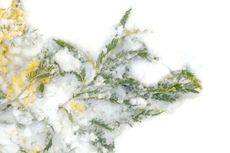 Acacia Winter Care: Can You Grow Acacias In Winter
Acacia Winter Care: Can You Grow Acacias In WinterCan you grow acacias in winter? The answer depends on your growing zone and the type of acacia you hope to grow. Learn more about hardy acacias and cold weather in this article. Click here for additional information.
By Mary H. Dyer
-
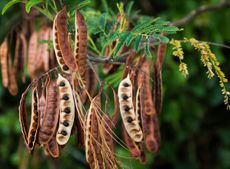 Propagating Acacia Trees – Learn How To Grow New Acacia Trees
Propagating Acacia Trees – Learn How To Grow New Acacia TreesWhile there is a lot of variety within the genus, acacias tend to be attractive, with beautiful yellow or white flowers and, in some cases, impressive thorns. But what do you do if you want more acacias in your life? Click here to learn more about acacia reproduction.
By Liz Baessler
-
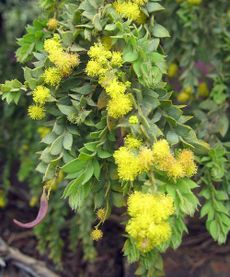 Knifeleaf Tree Care – Learn How To Grow Knifeleaf Acacia Trees
Knifeleaf Tree Care – Learn How To Grow Knifeleaf Acacia TreesAcacias are one of the wonders of the savannah. In Australia, these magnificent plants are called "wattle" and Knifeleaf acacia trees are an outstanding example of native flora. Some background on the tree, found here, will help you decide if the plant is right for your landscape.
By Bonnie L. Grant
-
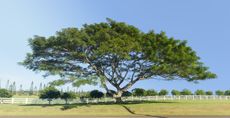 Acacia Koa Information And Care: Where Do Acacia Koa Trees Grow
Acacia Koa Information And Care: Where Do Acacia Koa Trees GrowGrowing a koa tree should only be attempted where the conditions are right, namely those of Hawaii, its native area. These are beautiful shade trees that do best in their natural habitat but can be grown to a shorter lifespan and smaller size. Click here for more info.
By Mary Ellen Ellis
-
 Guajillo Acacia Info – Tips For Growing A Texas Acacia Shrub Or Tree
Guajillo Acacia Info – Tips For Growing A Texas Acacia Shrub Or TreeThe guajillo acacia shrub is drought-tolerant and native to Texas, Arizona, and the rest of the Southwest. It is a great choice in landscapes and gardens for ornamental purposes and to screen areas or attract pollinators. Learn more about it in this article.
By Mary Ellen Ellis